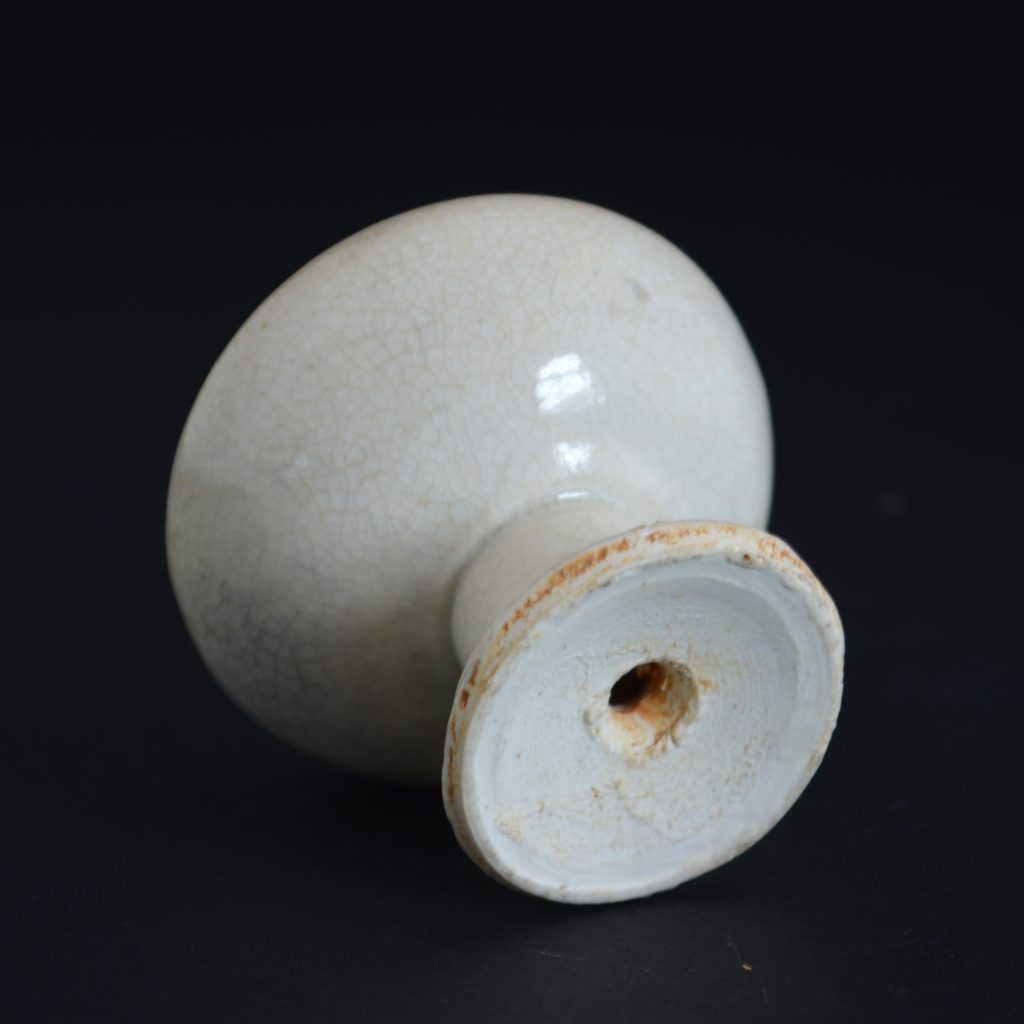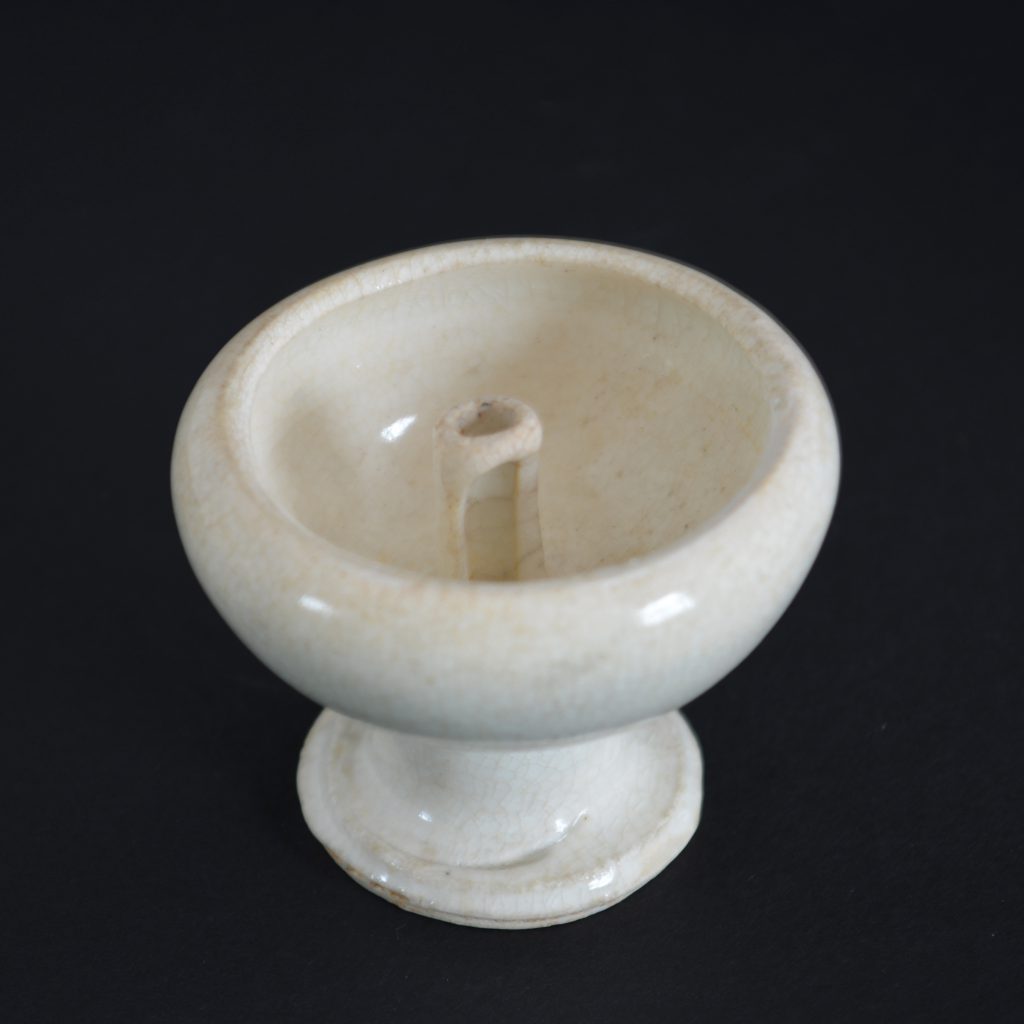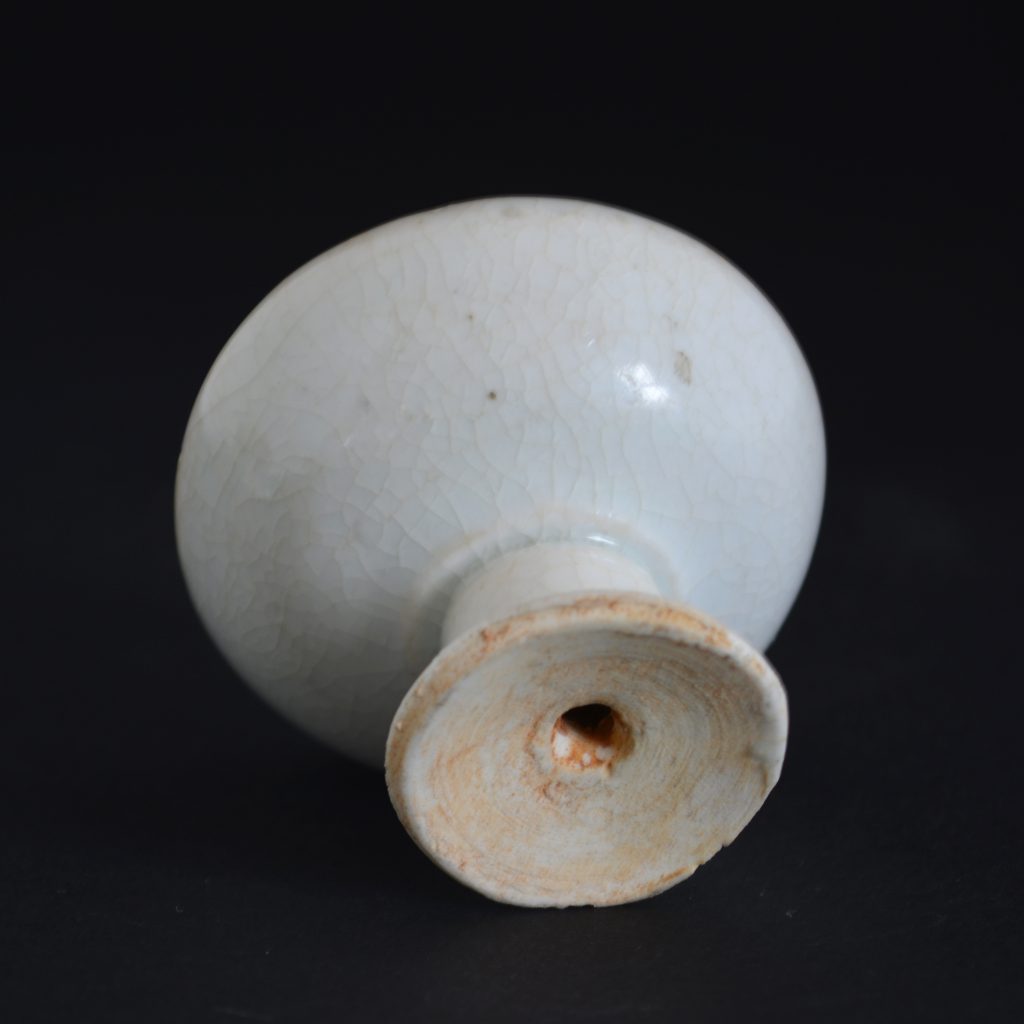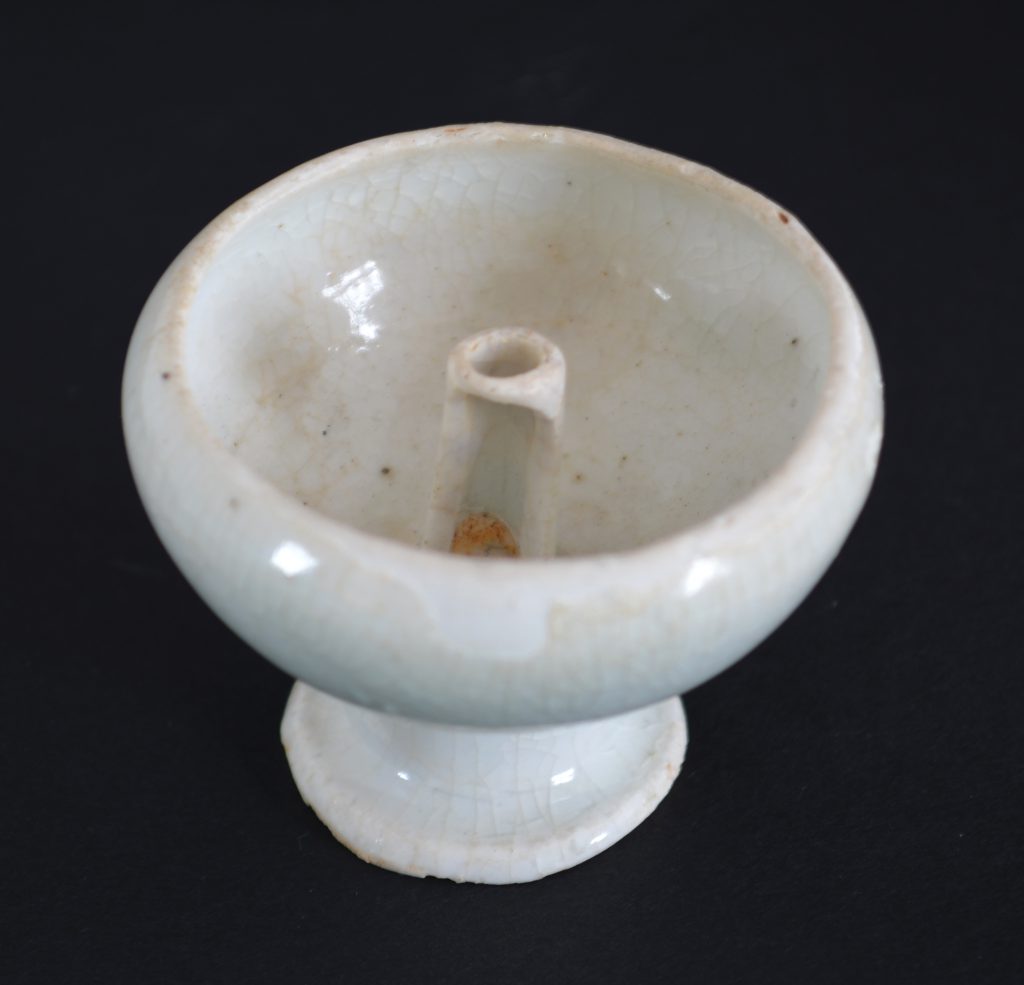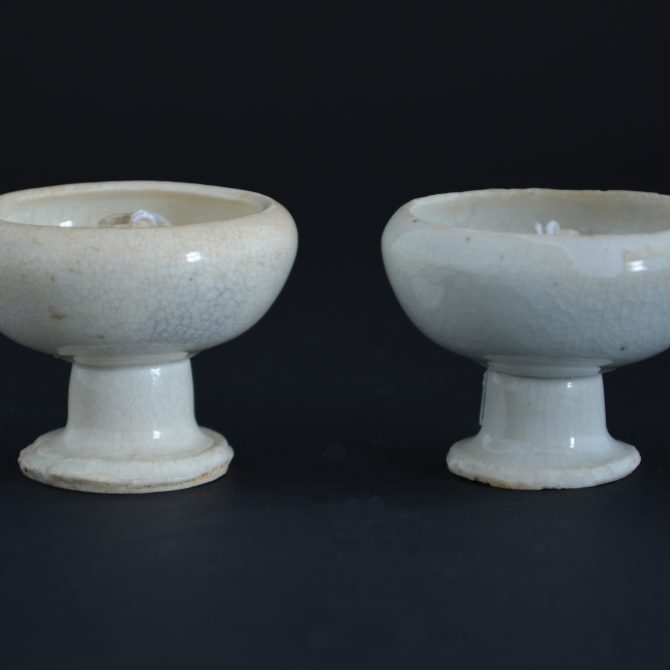
SONG DYNASTY 11th or 12th Century Incense Stick Holders
A pair of small Song Qingbai porcelain incense stick holders.
SOLD
- Condition
- One nozzle restuck, some glaze loss to one rim.
- Size
- Height : 4.5 cm (1 3/4 inches)
- Provenance
- R and G McPherson item number 18725. A private collection of Chinese ceramics.
- Stock number
- 24215
Information
Qingbai Ware :
The earliest known qingbai wares were produced in Jingdezhen in Jiangxi province around the late 10th century and are characterized by faint pale-blue glazes on low, wide forms. Qingbai continued to be enormously popular and highly produced throughout the Song dynasty (960-1279) and was prevalent in the Yuan dynasty (1279-1368), but slackened during the Ming dynasty (1368-1644) until being replaced by tianbai, ‘sweet white’ ware. The initial forms of qingbai were simple bowls and dishes, but by the mid-Northern Song the forms had advanced to include a wide variety of objects used for daily life such as ewers, boxes, incense burners, granary models, vases, jars, sculptures, cups, cupstands, water droppers, lamps, grave wares, and tools for writing and painting. The precedent for the majority of these forms is found in earlier metalwork and lacquer and Rawson has suggested that the imitation of silver was the primary force behind the production of white wares, including qingbai. See our `History` section for more information about Song Porcelain and Stoneware by Mindy M. McDonald.
